Morning Cleaning at Murin-an: The Care and Attention Invested in a Naturalist Landscape
September 11, 2023
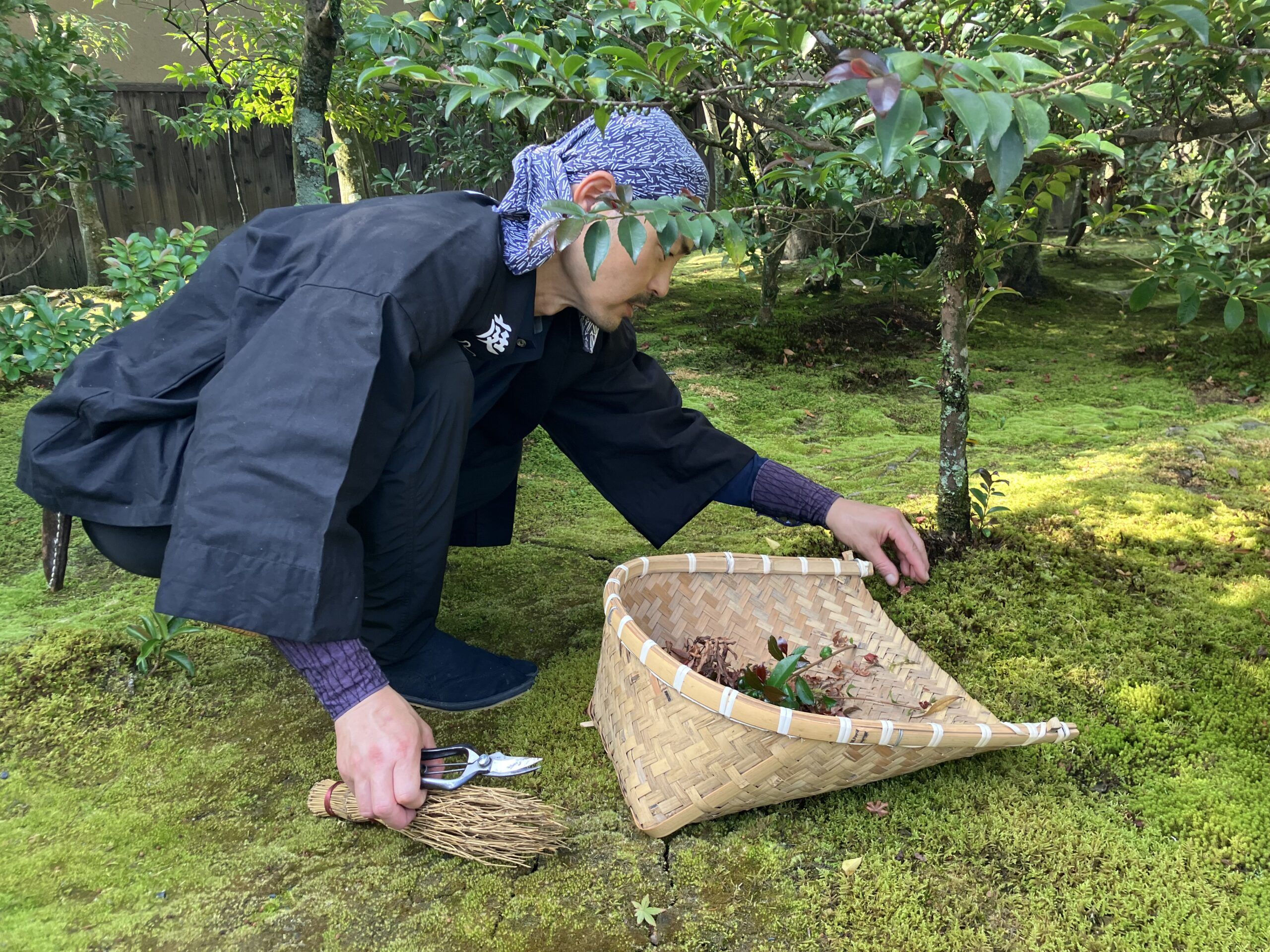
First thing in the morning, cleaning the garden: Kenta Deguchi, Murin-an’s head gardener
Murin-an’s rustic beauty looks as though it were all a piece with nature, completely unworked on by human hands. In fact, just the opposite is the case. Day in and day out, its garden’s naturalist scenery is supported by the constant care of its gardener. Perhaps most important of all is the daily act of cleaning the garden, first thing in the morning.
Garden cleaning mainly means the task of removing fallen leaves and weeds. Before Murin-an opens, cleaning is performed using hand brooms until 8:00 and then using blowers from 8:00-9:00. After Murin-an opens at 9:00, gardeners continue cleaning with hand brooms, but also by using their hands. This consistently keeps the garden’s scenery pleasant for visitors. This shows the gardener’s consideration for visitors, but consideration for Murin-an’s neighbors is equally important. “Morning cleaning starts by using blowers to collect fallen leaves,” Murin-an’s head gardener Kenta Deguchi explains, “but using blowers too early in the morning is a nuisance to the neighborhood, so we wait until just past 8:00, about one hour from opening.”
Interesting. Murin-an’s name literally means “a hermitage with no neighbors,” yet consideration for neighbors is indispensable for its garden’s care. By the time Murin-an opens, it has already received an overall cleaning.
This is when cleaning the garden by hand begins. Unlike the blower cleaning done before the garden opens, the cleaning performed after Murin-an’s opening is done in order of priority within a limited amount of time. The key here is how much the garden can be cleaned. “There’s an order to it. We clean by prioritizing the areas that stand out; we focus on cleaning the main house, the garden path, and other areas like that. If there’s time, we also clean areas that don’t stand out, and we make the garden as clean as possible within a short amount of time,” Deguchi-san says.
Nevertheless, morning cleaning is not mechanical work, it is a time for noticing what sort of care the garden needs. Deguchi-san explains this point by saying, “We sweep up fallen leaves, of course, but the garden also has weeds growing in it, so we pull up weeds that stand out and prune overgrown branches.”
As he explains this, Deguchi-san keeps cleaning, constantly moving his hand broom and winnowing fan. Noticing an overgrown branch, he prunes it and immediately returns to cleaning. Seeing an area where two moss species overlap, he uses his hands to balance their presence. Thus, cleaning work alternates constantly with pruning and hand work.
These photographs show what that process looks like.
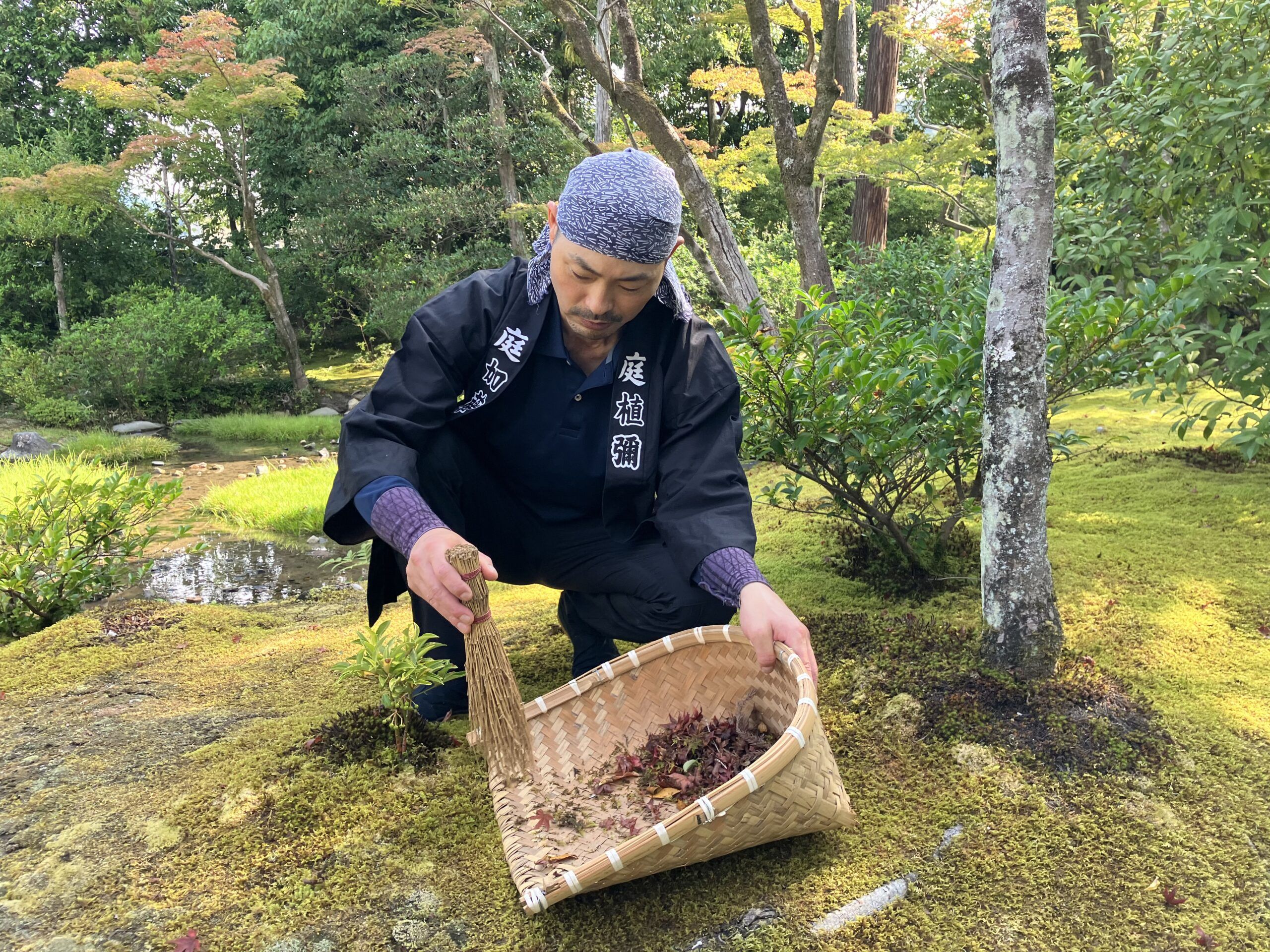
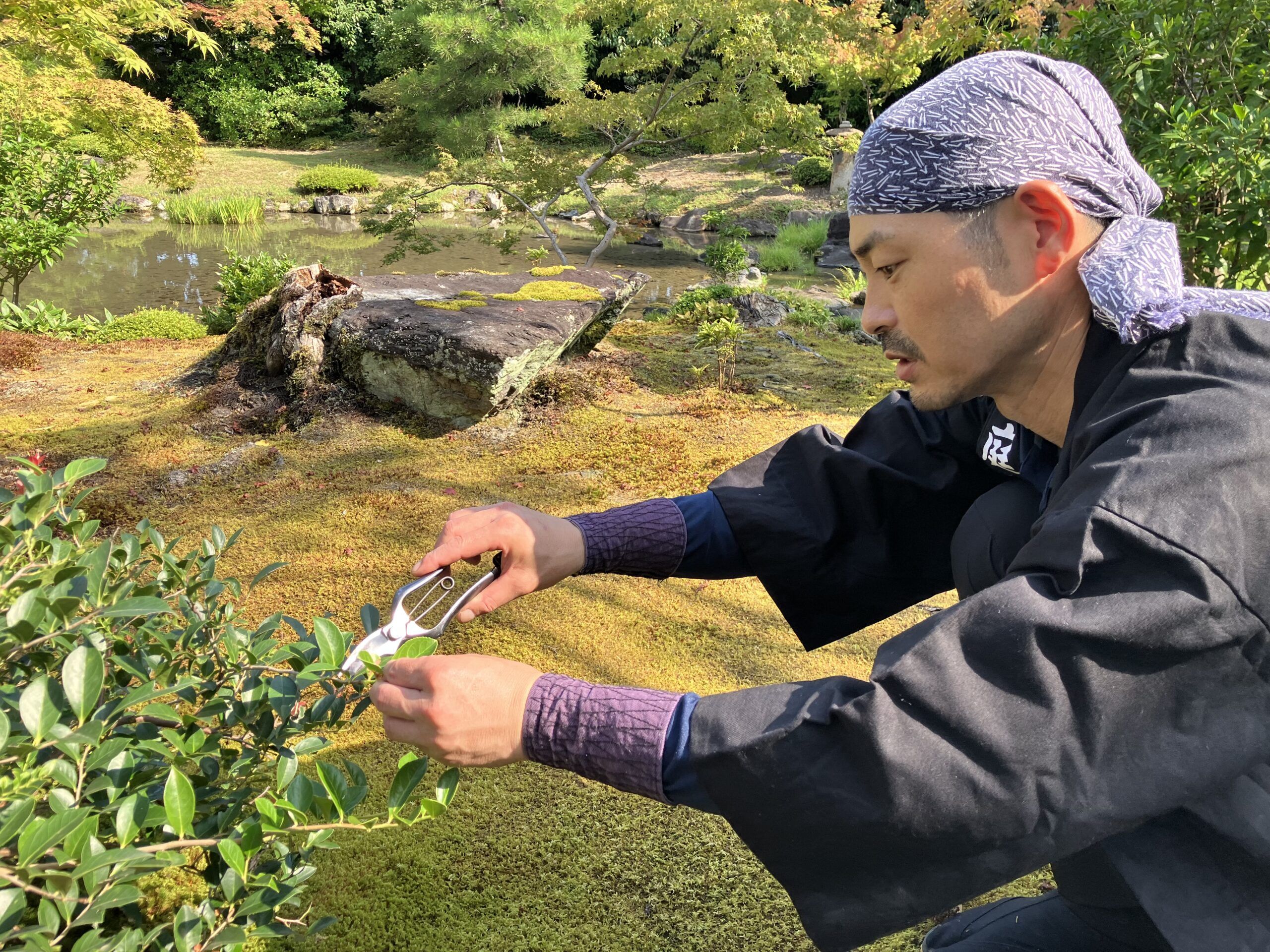
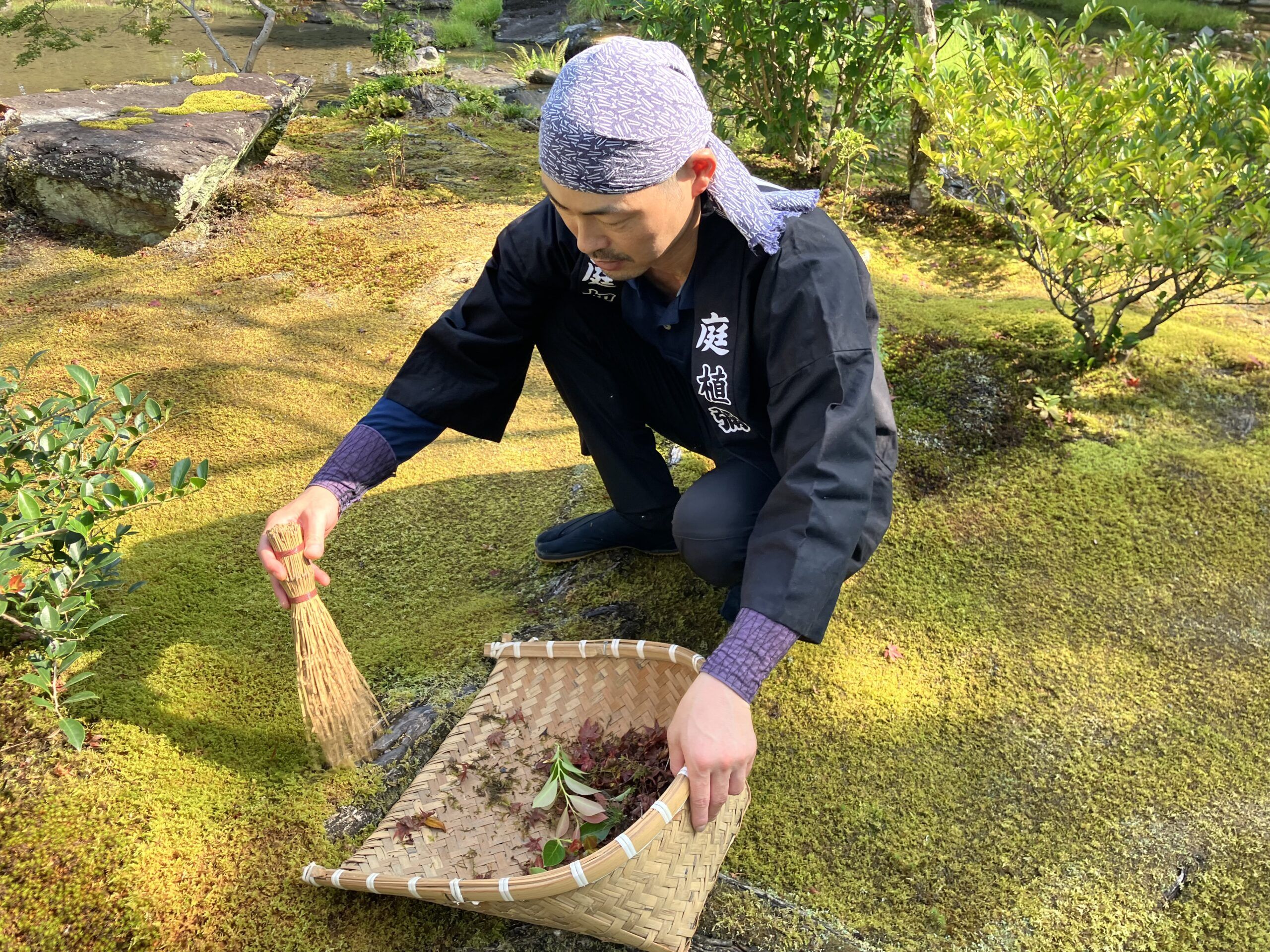
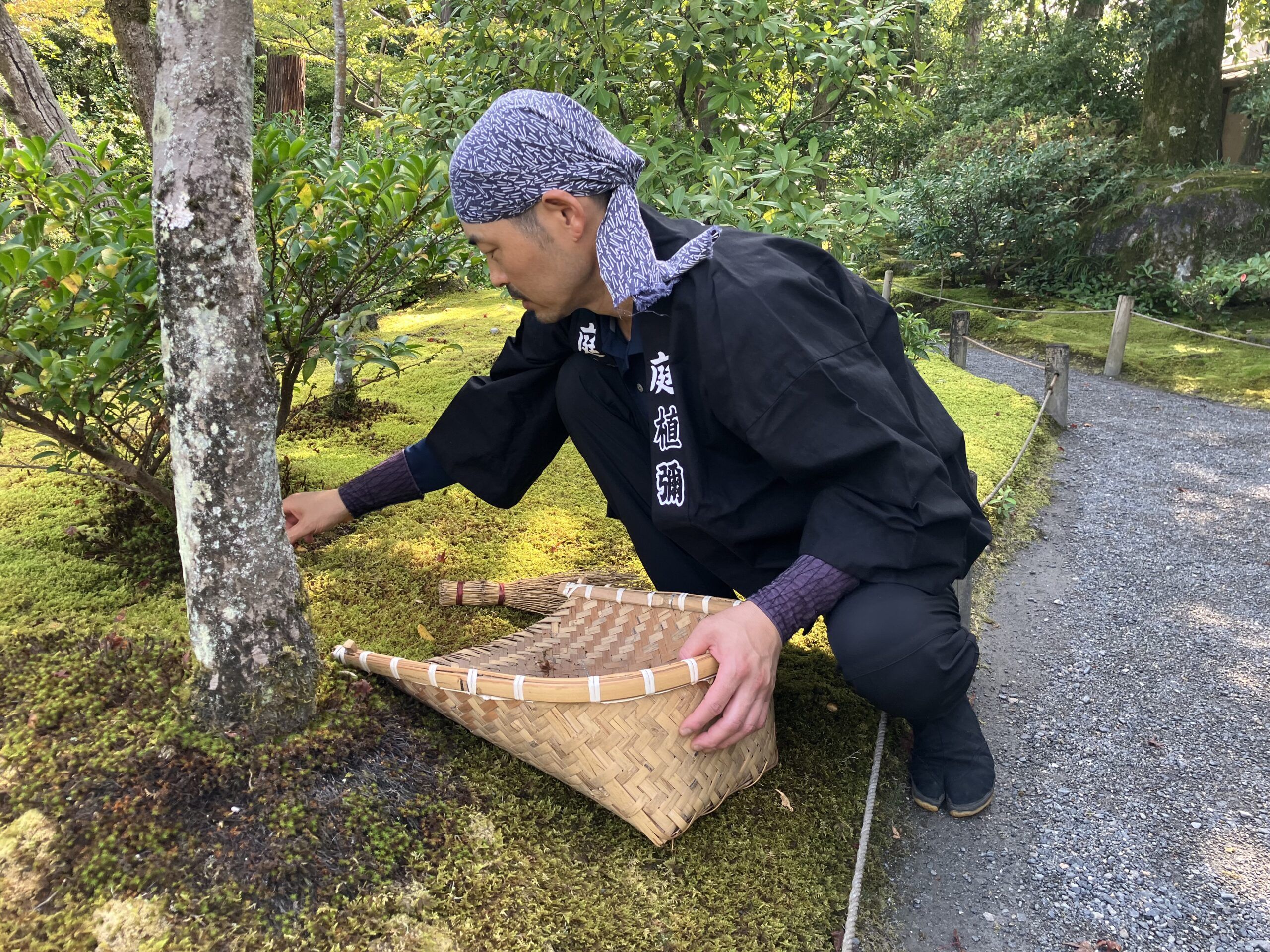
The “cleaning” that the gardener performs every day isn’t just the act of keeping the garden clean, but love invested into drawing out the individuality that only that garden has. In other words, the gardener’s attention to the garden is also an act of consideration. Thinking about it that way brings out another dimension to the scene of the gardener cleaning the garden. Next time you visit Murin-an, try looking at the gardener whose work supports its scenery.